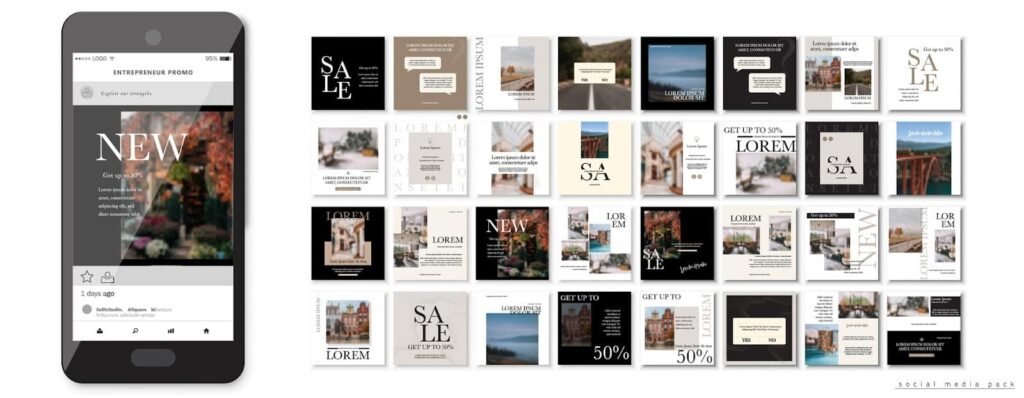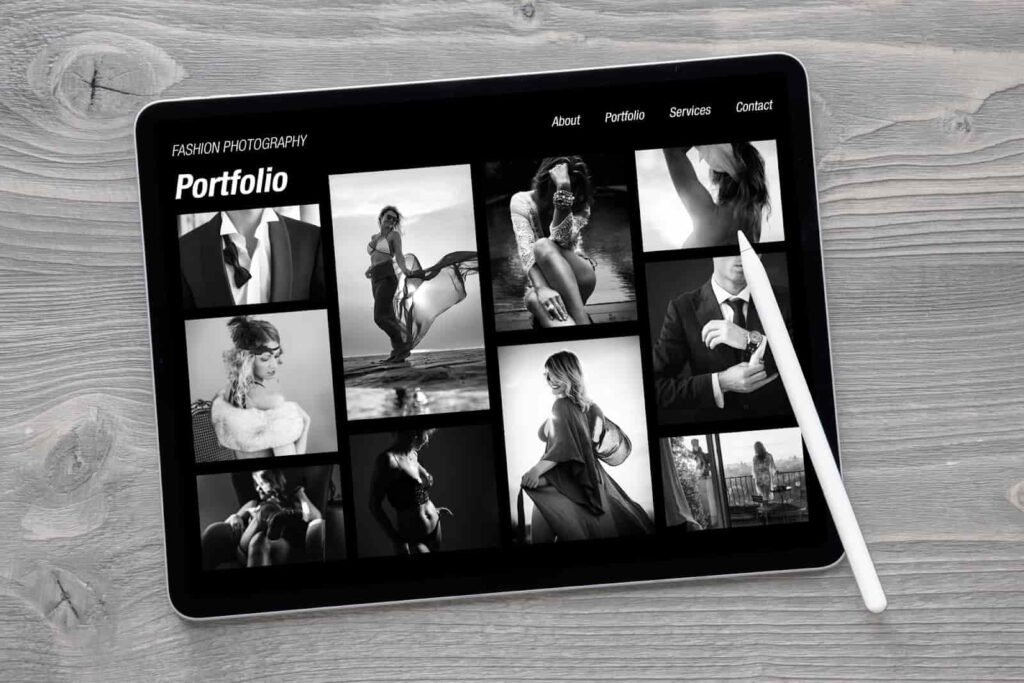Physical Address
304 North Cardinal St.
Dorchester Center, MA 02124
Physical Address
304 North Cardinal St.
Dorchester Center, MA 02124

In architecture, a portfolio is more than just a bunch of drawings and designs. It’s like a window into an architect’s world, showing off their vision, skills, and their journey in the field. This portfolio is a key tool; it’s like a storybook of an architect’s creativity and know-how, offering a sneak peek into their design style and the projects they’ve pulled off. For architects, their portfolio is like their personal brand. It tells their story, linking their ideas and the actual buildings they’ve made. This portfolio often plays a big role in helping them get jobs and projects.
Nowadays, whether to present this important work in a traditional print form or on a digital platform is a big decision for architects. Print portfolios’ hands-on feel and directness are up against the flexibility and ease of access of digital ones, making the choice pretty tough. In this article, we will compare digital and print portfolios, looking at how each type affects things, like how easy they are to get to, the experience they give viewers, and how well they show off an architect’s work. We’ll discuss the lasting nature and real feel of printed portfolios versus the energetic and interactive nature of digital ones and see how each kind shapes how people see an architect’s portfolio. Let’s dive in and see which one does a better job of being like an architecture resume, telling the full story of an architect’s work and skills.
Print portfolios have long been a staple in the architectural industry. Architects would meticulously compile physical portfolios containing printed photographs, drawings, and renderings of their designs. These portfolios allowed architects to present their work in a tangible format during client meetings, interviews, and networking events. The print format provided a sense of professionalism and craftsmanship, showcasing the architect’s attention to detail and dedication to their craft.
With the advent of technology and the digital age, architects have begun embracing digital portfolio formats. Digital portfolios involve digital platforms, websites, or software to present architectural work. This evolution has introduced new possibilities for presentation, including interactive elements, videos, 3D models, and virtual reality experiences. Digital portfolios offer architects the advantage of wider accessibility, as they can be easily shared with clients, peers, and employers across geographical boundaries.
In today’s contemporary architectural landscape, digital portfolios have gained significant prominence. Architects increasingly utilize online platforms like websites and social media to showcase their work to a broader audience. This digital medium allows architects to engage with potential clients and collaborators, gaining visibility and recognition on a global scale. Moreover, many architects now opt for a hybrid approach, integrating elements of print and digital portfolios to provide their audience with a more comprehensive and immersive experience.

There’s an irreplaceable quality to the tactile experience of flipping through a print portfolio. It engages the senses in a manner that digital media cannot replicate, allowing the texture, weight, and even the smell of the paper to contribute to the overall impression of an architect’s work. This physical engagement often aids in making the content more memorable.
Print portfolios have a sense of permanence that digital formats struggle to match. They are not subject to the same risks of data loss, obsolescence, or technological failure. A well-crafted print portfolio can endure for decades, becoming a lasting artifact of an architect’s career milestones.
The print portfolio is a vessel for personal expression through craftsmanship. The choice of binding, paper, and printing techniques can be as much a declaration of an architect’s attention to detail and commitment to quality as the work it represents.
Once a print portfolio is produced, it cannot be easily altered or expanded. Updates or corrections require a complete reprint, making it challenging to keep the portfolio current with the architect’s latest projects or evolving styles.
Print portfolios can be cumbersome, with their physicality limiting the number of projects that can be included without becoming too bulky. Carrying a print portfolio to multiple meetings or interviews can be impractical compared to the portability of a digital version.
Producing a print portfolio can be expensive, with costs associated with high-quality printing, professional binding, and premium materials. This investment can be significant, especially for emerging architects or students.
To ensure durability and a professional appearance, selecting high-quality materials is essential. Acid-free papers, sturdy covers, and professional-grade printing services can make a substantial difference in the final product.
An architect’s keen eye for design should extend to the layout of their portfolio. It should follow principles of balance, contrast, alignment, and repetition to ensure that each page composition effectively showcases the work while maintaining overall cohesion.
Understanding the audience is crucial when assembling a print portfolio. Tailoring the content to prospective clients or employers can make the portfolio more relevant and impactful. Architects should consider what projects or skills their audience will be most interested in and prioritize these in their layout.

Digital portfolios can be shared instantaneously with a global audience, transcending geographical boundaries. They are easily accessible on various devices, from smartphones to desktop computers, allowing for unparalleled convenience when viewing and sharing an architect’s work.
The digital format allows architects to create a more engaging experience by incorporating various types of content, including video walkthroughs, 3D models, and interactive elements. This dynamic nature can provide a more comprehensive understanding of the projects and the architect’s capabilities.
Creating a digital portfolio eliminates the need for physical materials, making it a more cost-effective and environmentally friendly option. The ability to update content also reduces the need for reprinting, further contributing to sustainability and ongoing savings.
The effectiveness of a digital portfolio can be contingent on the availability and reliability of technology. Issues with compatibility, website downtime, or even the viewer’s internet connection can hinder the experience.
The ease of creating and distributing digital portfolios has led to an oversaturated market. Architects may struggle to differentiate their portfolios in a digital landscape with countless competitors.
While digital portfolios offer convenience and dynamism, they can lack print’s personal touch and physicality. They can sometimes feel less tangible and thus less memorable to the viewer, who might miss the nuanced weight of paper or the texture of a well-crafted cover.
Ensuring that a digital portfolio is easy to navigate and intuitively structured is crucial for user engagement. Viewers should be able to find information quickly and navigate between projects without confusion.
A digital portfolio must perform well across all devices. This means implementing responsive design principles to ensure the portfolio is as impressive on a mobile device as on a large screen.
Architects should optimize their digital portfolio for search engines to enhance visibility. This includes using relevant keywords, meta descriptions, and high-quality content. Additionally, maintaining an active online presence through architecture forums, social media, and professional networks can drive traffic to the portfolio.
The debate between digital and print portfolios does not yield a one-size-fits-all answer. The right choice depends on an architect’s specific circumstances, career objectives, and the audience they intend to reach. Navigating these decisions requires a strategic approach, considering various personal and market factors.
An emerging architect aiming to make a splash in the industry might benefit from the agility and reach of a digital portfolio. The digital medium allows for rapid updates and sharing, ideal for a professional whose work is developing and expanding. In contrast, a seasoned architect with a substantial and established body of work might value the permanence and gravitas of a print portfolio for those high-stakes meetings where first impressions are paramount.
Understanding the expectations and preferences of your target audience is crucial. A print portfolio might resonate more strongly if you’re engaging with clients or firms that prize traditional methods and physical craftsmanship. Conversely, a digital portfolio could be more effective if your target market is more contemporary, tech-savvy, or geographically dispersed. It’s also worth considering the norms of the region or sector you’re targeting; some markets may have a stronger bias towards digital presentation than others.
Your comfort level with technology will also guide your choice. Architects skilled in digital tools and platforms may find it easier to create and maintain a digital portfolio that showcases their work effectively. For those less confident in the digital realm, a print portfolio could be a more straightforward and controlled way to present work. However, it’s worth noting that digital skills are becoming increasingly important in the architecture field.
Ultimately, it’s not necessarily a question of which format wins outright but which format wins for you at this point in your career, with your specific goals, audience, and skills. Many architects find that a balanced approach, maintaining both digital and print portfolios, allows them to leverage the strengths of each medium as appropriate for different situations and audiences.
In the dialogue between digital and print portfolios for architects, both formats emerge with distinct advantages: digital portfolios excel in their reach and adaptability. In contrast, print portfolios stand out for their tangible craftsmanship and enduring presence. As the architecture industry navigates through technological shifts and cultural transformations, the ability to adapt portfolio formats to these changes is becoming increasingly essential. Ultimately, the astute architect will continuously refine their craft and their method of presentation, ensuring their brand evolves in tandem with their portfolio. Whether pages are turned, or screens are scrolled, the victory lies in effectively telling the architectural narrative and connecting with the intended audience in a resonant and memorable way.